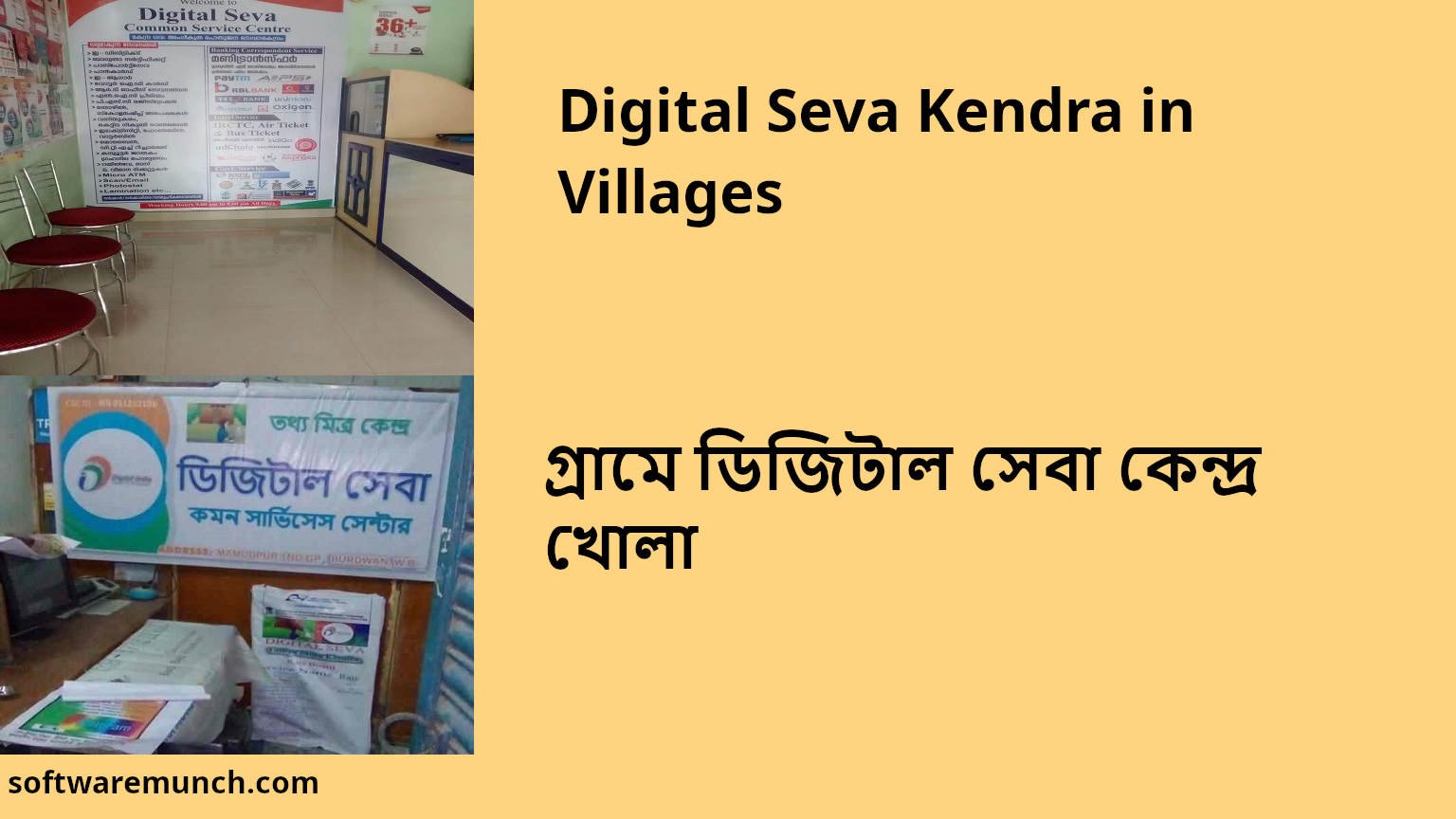In many Indian villages, people often face difficulty in getting small government and financial works done. Something as simple as paying an electricity bill or booking a railway ticket sometimes means travelling to the nearest town. For Aadhar update or PAN card application, villagers may spend a whole day standing in queue. The travel cost, the time lost, and the struggle is very common.
That is why the idea of Digital Seva Kendra (DSK), also known as Common Service Centre (CSC) or e-Mitra in some states, has become very important. It brings basic services to the village itself, where people can walk a few steps and get their work completed without going far.
A Digital Seva Kendra is not a big office. It is usually a small shop or room in the market area or near the panchayat. Inside there will be a computer, printer, internet connection, and one person who will manage everything. With this small setup, many importantservices are made available to villagers such as paying water or electricity bills, updating Aadhar, applying for a PAN card, booking railway and bus tickets or filling forms for government schemes such as pensions, scholarships, or ration cards.
Why Villages Need Such a Service
Life in the village is simple, but certain official work is unavoidable. Every family has to pay bills, apply for documents, or travel by train at some point. If a service is not available nearby, villagers either delay the work or spend extra money on travel. For poor and middle-class families, even this extra cost feels heavy.
When a Digital Seva Kendra is present, it becomes a center of trust for the whole area. People know that their work will be done in time. The operator earns a small commission for every service. This may not be huge money at once, but when many people come daily, the earnings grow into a steady monthly income.
In Bengali we say – “chhoto chhoto dhara milei boro nodi hoy” (small streams together make a big river). In the same way, small earnings from each villager slowly make a good livelihood for the operator.
How a Digital Seva Kendra Operates
The system is simple. The government has created a national CSC portal where all services are available in digital form. After registering as a Village Level Entrepreneur (VLE), the operator gets login access. Whenever a villager comes for a service, the operator logs in, completes the work online, and charges a small service fee.
For example, to book a railway ticket, the villager gives details and money. The operator books through the system, prints the ticket, and hands it over. For electricity bill payment, the operator simply enters the consumer number, takes payment, and generates receipt. For Aadhar-related work, a biometric device is used to verify fingerprints or iris scan.
This way, every service is connected to the government database, so the work is official and authentic. Villagers also feel confident because they receive receipts and confirmation on the spot.
What is Needed to Start
Starting a Digital Seva Kendra is not very costly. A young person in the village can begin with:
- One computer or laptop with Windows operating system.
- A printer and scanner for documents.
- Biometric fingerprint device (for Aadhar).
- Internet connection (broadband or 4G dongle).
- A small shop or room, preferably near panchayat or in the market.
- Power backup, like inverter or UPS, in case of frequent power cuts.
With these, the operator can apply on the CSC website, complete the registration, and once verified, start offering services.
Benefits for the Operator
The income of a Digital Seva Kendra depends on how many villagers come daily. In small villages, even if 20–30 people visit every day, it can create a decent earning. In bigger areas, the income can be higher. But apart from income, the biggest benefit is respect.
The person running the Kendra becomes important in the village. People start knowing him as someone who can solve their official problems. He becomes a bridge between government and citizens. In Bengali we say – “shobai tomar kache ashe chhoto boro kaaj niye” (everyone comes to you with small and big work).
This respect, along with steady income, makes it a satisfying career choice for rural youth. Many who would otherwise migrate to towns for jobs, can stay in their own village and still earn.
Future Scope
India is moving fast towards digital governance. Almost every service – from banking to insurance, from farming subsidies to exam applications – is being shifted online. This means in the coming years, more work will be handled through Digital Seva Kendras.
For a rural youth, starting this business today is like planting a tree. The earnings may look small in the beginning, but as services increase and trust grows, it will give shade and fruit in the future.
Summary – Key Points to Remember
- Purpose: A small office in the village to provide government and utility services like bill payments, Aadhar updates, PAN cards, ticket booking, and scheme applications.
- Setup Needed: Computer, printer, internet, biometric device, small room/shop, and power backup.
- Registration: Apply on official CSC portal to become a Village Level Entrepreneur (VLE).
- Income: Commission-based, grows as more villagers come regularly.
- Benefit to Villagers: Saves travel cost and time, gives trust and reliability.
- Benefit to Operator: Steady income and respect in the community.
- Future: With more services going online, Digital Seva Kendras will become even more important.
